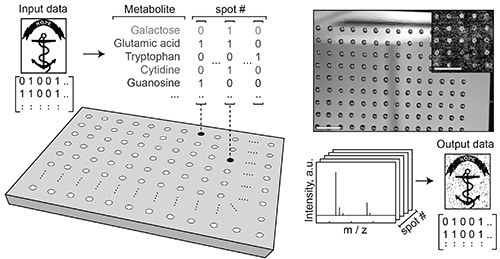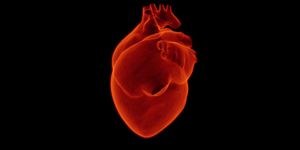Molecular Thumb Drives: Storing Images in Molecules
DNA molecules are the very essence of biological data and have long baffled scientists for its potentiality in utilizing it for engineered data storage devices. However, a research study led by Brown University may prove that DNA is not the only known molecular data storage.
Learn more about DNA data-storage:
The study examined the storage and retrieval of data in an array of liquid mixtures composed of small molecules known as artificial metabolomes—which was uniquely assembled by the researchers.
“This is a proof-of-concept that we hope makes people think about using wider ranges of molecules to store information,” stated Jacob Rosenstein, a professor in Brown’s School of Engineering and senior author of the study. “In some situations, small molecules like the ones we used here can have even greater information density than DNA.” Specifically, the study wanted to tests if artificial metabolomes could be a data storage option—more like a molecular thumb drive.
Brown University: The approach maps the ones the zeros of digital data to the presence or absence of particular molecules in solutions. The researchers used the scheme to encode image files in solutions. (Image Credit: BrownUniversity.edu)
“It’s not hard to recognize that cells and organisms use small molecules to transmit information, but it can be harder to generalize and quantify,” says Eamonn Kennedy, a postdoctoral associate at Brown and first author of the study. “We wanted to demonstrate how a metabolome can encode precise digital information.”
Findings of the study were published in PLOS ONE and described the encoding of kilobyte-scale image files into metabolite solutions. The study points to a future where storing data in molecular systems may not be the only advantage but also the ability to compute within metabolite mixtures.
“Using molecules for computation is a tremendous opportunity, and we are only starting to figure out how to take advantage of it,” said Brenda Rubenstein, a Brown assistant professor of chemistry and co-author of the study.

Brown University: The research saved this image of a cat into metabolite solutions. (Image Credit: BrownUniversity.edu)
“Research like this challenges what people see as being possible in molecular data systems,” Rosenstein said. “DNA is not the only molecule that can be used to store and process information. It’s exciting to recognize that there are other possibilities out there with great potential.”
Source: Brown University









